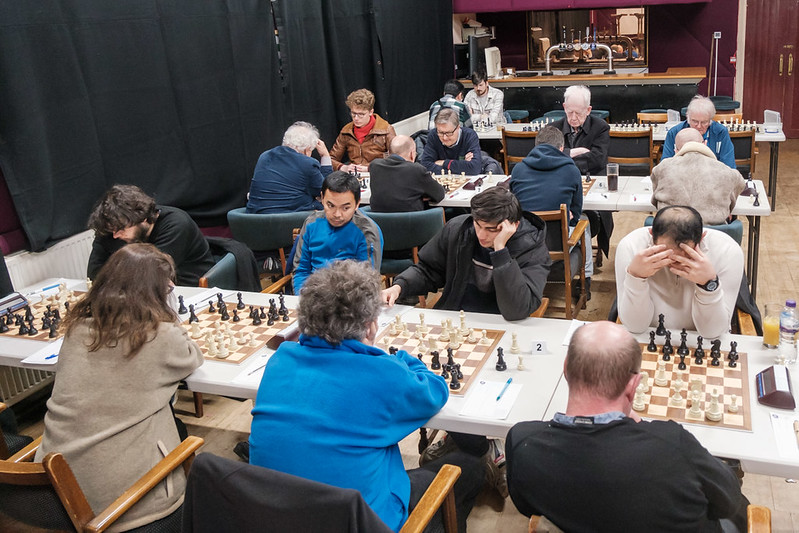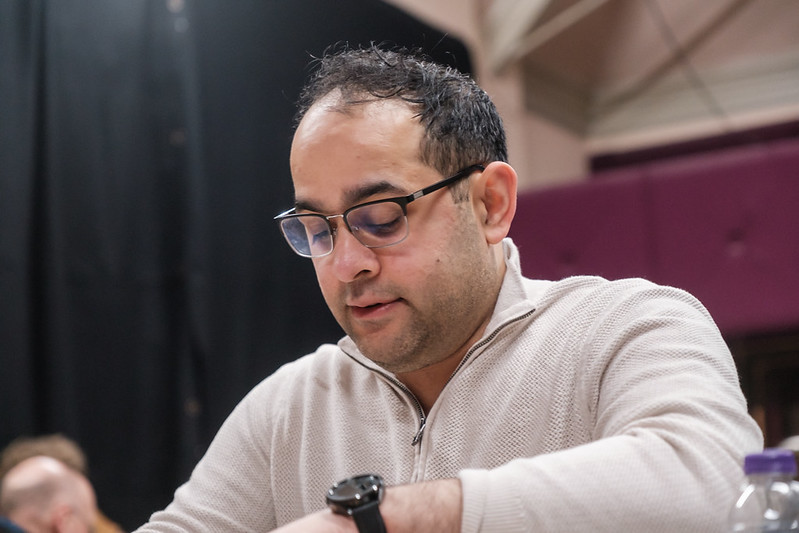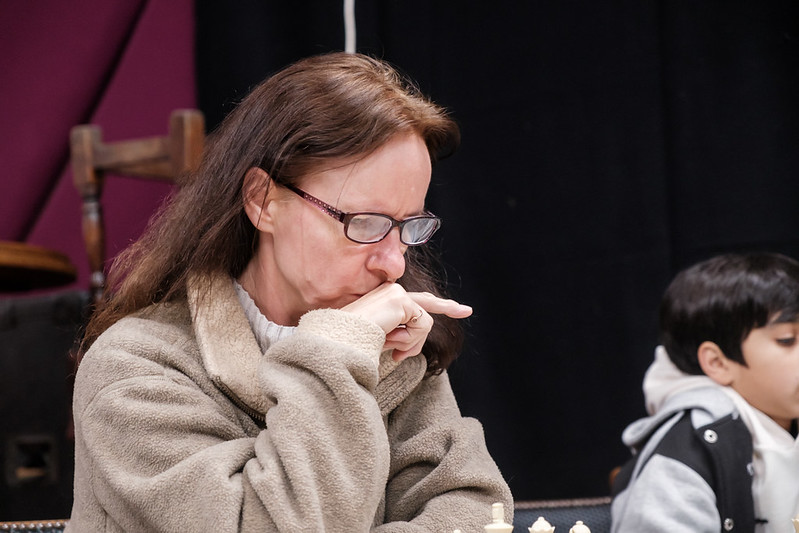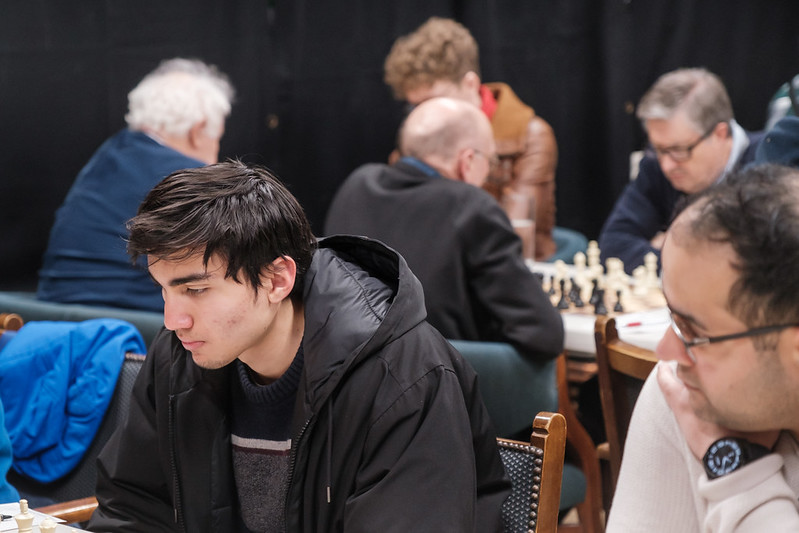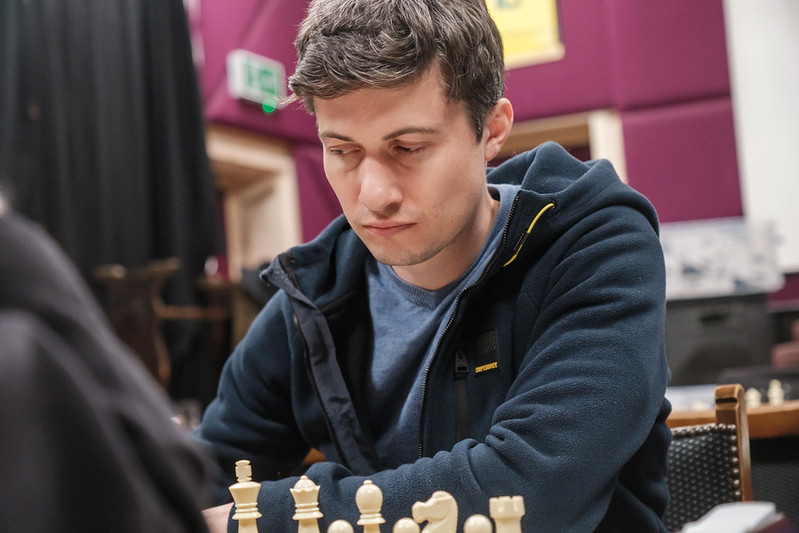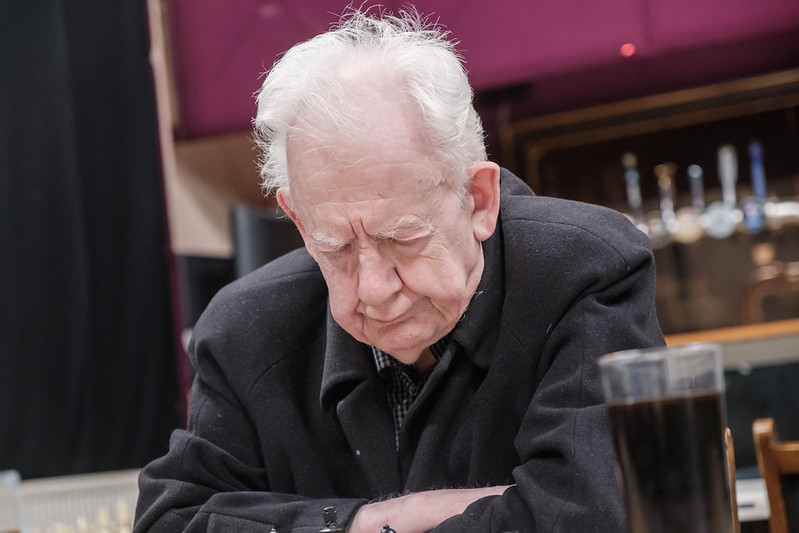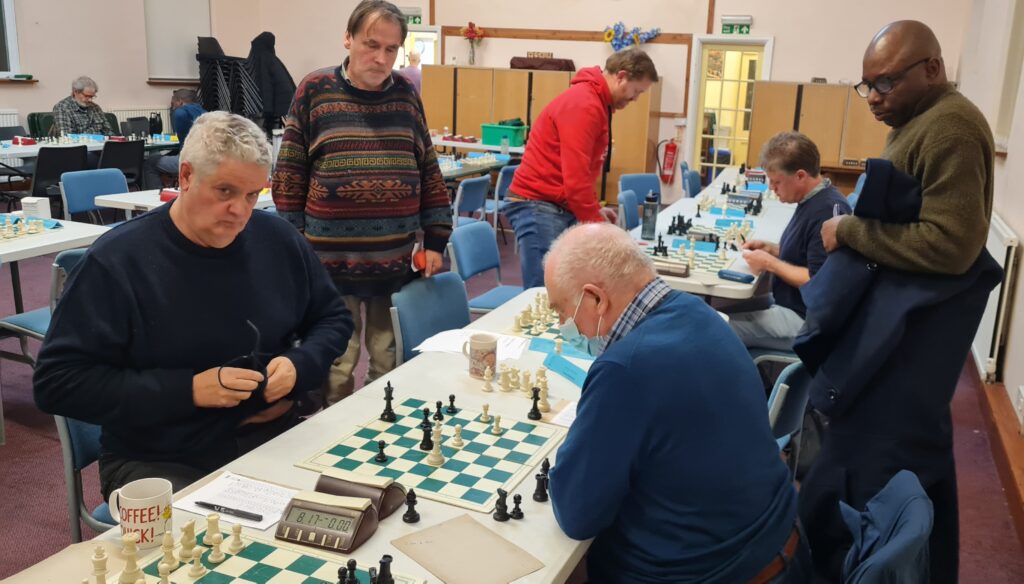Surrey League division 2 match played at the Willoughby Arms on 4 December 2023
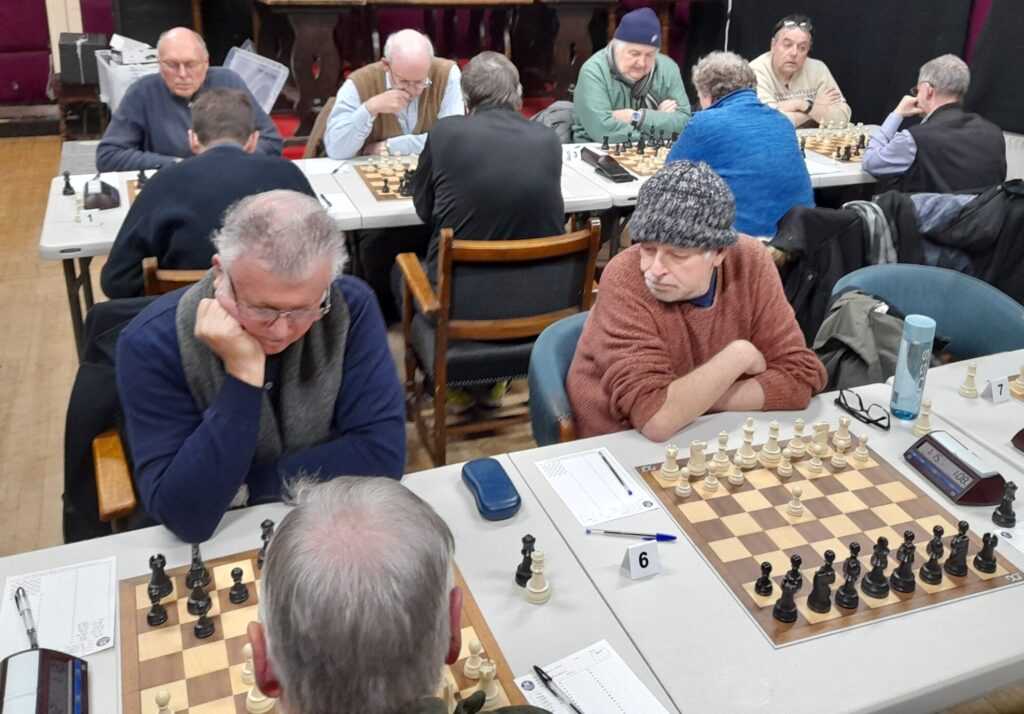
Keeping Kingston 2 in division 2 of the Surrey League, which is populated mainly by other clubs’ first teams, is usually a struggle, but there are encouraging signs that this season may be different (famous last words). After a surprise away victory at Coulsdon (admittedly against Coulsdon 2), this was an emphatic and vital 6-1 win against South Norwood 1, who are rooted to the foot of the table. There is a long way to go, but at present Kingston 2 are well placed to avoid being dragged into a relegation dogfight.
We were helped by South Norwood defaulting the bottom two boards, and our top five – David Rowson, Peter Andrews, John Foley, Julian Way and Alan Scrimgour – were very strong. Julian Way was quick off the mark with a 21-move win against South Norwood captain Simon Lea. Simon played the Modern Variation of Alekhine’s Defence (1. e4 Nf6 2. e5 Nd5 3. d4 d6 4.Nf3), and all was going swimmingly until he erred on move 18.
Black actually has a good move here – 18…Bd4! Taking with the knight is bad for White: 19. Nxd4 Nxd4 20. Qxd4 Nxb3 forking queen and rook and giving Black a small advantage. But instead Simon played 18…Rac8, which achieves nothing and ignores the pin which Julian is about to exert by moving his bishop to b5. The end was horribly swift: 18…Rac8 19. Bb5 Be6 20. Na2 Be7 21. Nb4 1-0 This was the position in which Simon resigned.
Black is losing a piece and his position is in ruins. Remarkable how such a downpour can emerge from what looked a relatively cloudless sky. With the two defaults, that made it 3-0 to Kingston and we were virtually home.
South Norwood’s Ken Chamberlain was outrated by 200 points on board 5, but he fought stoutly against Alan Scrimgour, who launched an early kingside attack and never let go. Alan’s attack is building nicely in the position below, and the defensive forces are getting harder to marshal.
25. Rg1 is essential here to shore up the defence of the king, but Ken optimistically played 25. Bd2, hoping to counter against the black queen. 25… e4 is a deadly response. The pawn can’t be taken because Qe5+ would win the bishop. White is effectively lost, though Ken battled on for another 15 moves. That made it 4-0 to Kingston and victory was ours.
Peter Andrews defeated his old adversary Ron Harris – they have been meeting each other across the board for more than 40 years – in a rook and pawn endgame. But the win was by no means straightforward. Harris, with Black, playing quickly and fluently as usual, had an advantage for much of the game, and in the position below has a clear edge.
Perhaps eyeing the a-pawn as a target for his rooks, Harris chose to exchange queens here with 19…Qa4. But the exchange helps White. The move which would have consolidated Black’s advantage is 19…d5, getting his knight into a powerful central position on d5 after an exchange of pawns and preparing to dislodge the white queen by launching a rook down the b-file. Exchanging queens took all the immediate heat out of the situation and reduced Black’s advantage.
White was by no means out of the woods, however, and Peter felt the error he made in the position below could have proved fatal with best play by Black.
Here Peter plays 28. Kf3. In chess, such tiny misjudgements can be costly. 28. Kg3 would be level, but Kf3 potentially allows a rook to get to f1, winning the knight. Stopping that happening is equally problematic for White. Either way, 28…Ra1 is winning for Black, but luckily for Peter (and his team) Ron failed to spot the opportunity and played the innocuous 28…Rc3, leading to an exchange which produced a rook and pawn endgame in which Peter had an extra pawn. Like all such endgames, it was objectively drawn, but Ron went wrong in this position.
36…Rc5 here draws, but Ron chose Rc1, allowing Peter to pick up another pawn. Eventually, despite harassment from the rook and an unfortunate incident in which Peter (in extreme time trouble) realised the clock was not adding the stipulated 10-second increment, he got his h-pawn home and Ron resigned. Unlucky for the South Norwood veteran, but a resilient performance by Peter, who was under the cosh for long periods and is an astute enough reader of the balance of power in a game to know there were moments when he was close to lost.
Kingston’s one reverse came on board 1, where the highly rated Marcus Osborne got the better of David Rowson. Marcus played an English and David was doing fine until move 29, when he blundered the exchange. This is not something you can do against a player of Marcus’s quality, and eventually he made his two rooks tell against David’s rook and bishop, which could not defend Black’s rather ragged pawn structure.
The final game to finish was Kingston president John Foley against the always combative Paul Dupré on board 3 – an encounter which John has annotated in the Games section. It was a thrilling game in which both sides played with great aggression and a pleasingly devil-may-care attitude. John eventually won it after a three-hour struggle to make it 6-1 to Kingston. You can, though, be sure that South Norwood will be stronger and will not default boards when we make the reverse trek in April. There will be no counting of chickens yet in this division.
Stephen Moss, Kingston captain in Surrey division 2


